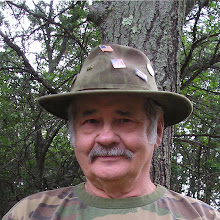Food for Survival VIII/Foraging
Edible plants abound all around us. Even in cities and towns there are many edible plants. These locations require some caution, as we never know what type of poisons have been used on them. Those of you who feel that you may be stuck there during a survival situation, look to your own back yards first. If you do not use weed killing chemicals, you should be able to find dandelions, plaintain and possibly purslane, lambs quarters or some others depending on your area. The next thing I would do (the first for apartment dwellers) would be to go to parks and wooded areas. Go to the least used parts of these areas and see what you can find. Check these areas out at different times of the year to see what grows there in each season. If it is not against the law pick some of the plants and take them home and try them. Like any other food, not everyone likes all of what they find. Those who live in the country or small towns have a much wider range of plants to choose from. If you own some land of your own, become completely familiar with every edible plant at each time of the year. Also, and this goes for everyone, city or country, go to county, state and national parks, forests and refuges in your area. Scout these out and even pick and use some of the plants. Learn what certain things look like at different times of the year. Remember what a walnut tree, a hickory tree, or an oak tree looks like in the winter. If you could dig through the snow beneath these trees during the winter, you may be able to find some nuts the squirrels have not got to and that could save your life. Wherever you are look for and try to identify as many wild plants as possible, you never know where you might be when a survival situation occurs. Spring, here in the northern half of the country, is the time to really start plant hunting. First you will be finding mostly greens and vegetable substitutes. As summer progresses you will find more of these plus fruits and berries, while in the fall there will also be nuts. Winter is difficult but not impossible. The inner bark of certain trees, certain evergreen needles make a healthy tea and there are other things. One thing to look for in the winter is the cattail. Chop away any ice and dig up the roots, they make an excellent potato substitute. Other parts of the cattail can be eaten as well. If you you live in the southern half of the country, you will be able to find more during the winter. Wherever you live, there is always some wild food available.


0 Comments:
Post a Comment
<< Home